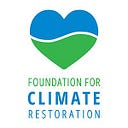Guest Post—Mangrove Restoration in Kenya with Mikoko Pamoja
Kassim Juma, Project Coordinator, Mikoko Pamoja
My name is Kassim Juma, and I’m the Project Coordinator of the Mikoko Pamoja (MP) project in Gazi Bay, Kenya. I attended Kenyatta University for Coastal and Marine Resource Management, and my current focus is on mangrove restoration. My aim is to change the way people see and value mangroves, which will lead to an increased commitment to conserve and restore these amazing systems. I developed MP in 2004 to support the livelihoods of locals in Gazi Bay. I became the coordinator for the MP project thanks to my interest, knowledge, data analysis skills, and knowledge of carbon accounting, reporting, and monitoring, particularly on mangrove ecosystems.
Mikoko Pamoja is a mangrove conservation and restoration project in Gazi Bay, Kenya.
Gazi Bay is a fishing community of about 5,400 residents, most of whom live a subsistence lifestyle with limited agriculture. MP is a community-led mangrove conservation and restoration project that channels carbon finance to support locals and to provide long-term incentives for mangrove restoration and conservation through community involvement and benefit. Gazi Bay consists of 615 hectares (ha) of mangroves, but MP only deals with 117 ha, of which 107ha is a natural stand and 10ha is a plantation.
Mangroves have an important role to play in coastal communities.
Mangroves are also known as “blue forests” and typically occur in intertidal zones along the tropical and subtropical coastlines. Mangroves are essential for both human and marine life providing critical habitats for fish during their early life stages. Tree detritus and bacteria accumulate in the water beneath mangroves and are an important refuge for juveniles, as knotted mangrove roots protect them from predators. 90% of the locals from Gazi Bay depend on fisheries for their livelihoods.
Mangroves also fight climate change. The United Nations Environmental Programme (UNEP) estimates that globally, mangrove forests sequester as much as 22.8 million tonnes of carbon each year within their roots, trunks, and soils. While they provide valuable services for people, mangroves are threatened by climate change impacts such as rising sea levels and temperatures. Mangrove forests are being depleted because their wood is valuable and prized by coastal communities as a prime source of timber for construction, fuel, and even medicine.
Mikoko Pamoja is led by the community, for the benefit of the community.
The Mikoko Pamoja project has delivered climate, biodiversity, and livelihoods to the Gazi Bay Community on the Kenyan Coast. Conservation efforts, including incentivizing the protection of mangrove forests against land uses, need to be enhanced. Mainstreaming mangroves and associated blue carbon ecosystems into the development and climate change agenda could accelerate Kenya’s achievement of the Sustainable Development Goals (SDGs) and the Paris Agreement. The project responds directly to the SDGs, particularly SDG 13.
As a community-led project, local support and control have been essential components of the project since its early beginnings. The Mikoko Pamoja Committee, which serves as the managing entity of the project, is elected by local people. It is gender-balanced and includes representatives from both villages in Gazi and Makongeni. The Mikoko Pamoja Committee ensures the community is engaged in project activities, including nursery establishment, planting, and monitoring. It organizes open community meetings to decide how carbon funds are spent. Decisions about priorities are made democratically and funds must be allocated for the community’s — not individual — benefit. The Committee also engages schools within and around Gazi Bay, both at the primary and secondary level, in awareness-related activities, including village and beach clean-ups, essay writing, and artwork competitions. Community engagement in benefit sharing, transparency, and awareness creation has been pivotal for the success of the project.
Our future plans are:
- Inclusion of seagrass: Seagrasses are important for blue carbon storage and are closely linked with the mangrove forests’ carbon storage. Including both seagrasses and mangroves in carbon management efforts would support the conservation of both as well as help sustain fisheries. This effort would be the first combined mangrove/seagrass carbon project in the world.
- Improved cookstoves: Increasing the efficiency of cookstoves would allow for savings on fuel, decrease carbon emissions, and generate additional income for the community. This would alleviate pressure on forests and reduce health risks.
There are many ways you can help protect these ecosystems. Look for sustainable alternatives to eating farmed shrimp from mangrove areas. Find local conservation and government organizations in your area that are working to conserve mangrove forests, and support them. Remember, the conservation of mangrove ecosystems is more than just planting new trees; it includes science, policy, education, and much more.
